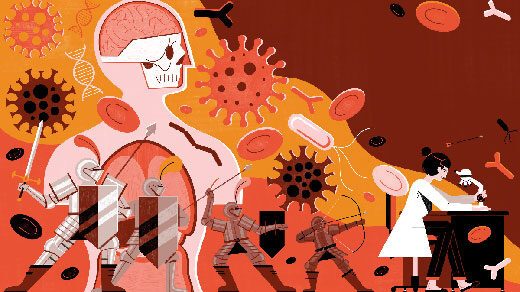In a world where the intricacies of human biology continue to confound, one enigma stands out amidst the labyrinthine complexity – inflammation. This seemingly paradoxical phenomenon, often associated with discomfort and distress, has long been regarded as an essential defense mechanism against harm. However, beneath its deceptive facade lies a treacherous pathogen that can wreak havoc on our delicate systems.
A Double-Edged Sword: The Ambivalent Nature of Inflammation
While traditionally viewed as an indispensable guardian shielding us from external threats, inflammation possesses a dual nature that defies conventional understanding. On one hand, it serves as an innate response to injury or infection; mobilizing immune cells and initiating reparative processes in affected tissues. Yet on the other hand, this very same process can spiral into chronicity and inflict severe damage upon vital organs.
Within the intricate tapestry of our physiology lies a delicate balance between pro-inflammatory mediators and their anti-inflammatory counterparts. When this equilibrium is disrupted by genetic predispositions or environmental factors such as poor diet or stress, inflammation assumes an insidious guise – transforming from protector to perpetrator.
The Silent Saboteur: Chronic Inflammation’s Stealthy Onslaught
Beneath its somber cloak lurks chronic inflammation – a silent saboteur capable of undermining our well-being without warning signs or overt symptoms. Unlike acute inflammation which subsides once healing is achieved, chronic inflammation persists relentlessly like an unyielding tempest ravaging through vulnerable territories within our bodies.
This malevolent force has been implicated in numerous ailments ranging from cardiovascular diseases to autoimmune disorders and even cancer itself. By perpetuating tissue damage while simultaneously impairing cellular repair mechanisms, chronic inflammation becomes not only a dangerous necessity but an ominous harbinger of prolonged suffering and compromised vitality.
Unveiling the Veil: Unraveling the Mysteries of Inflammation
As we delve deeper into the enigmatic realm of inflammation, scientists strive to unravel its intricate mechanisms in hopes of mitigating its detrimental effects. Recent research has shed light on novel therapeutic targets that could potentially tame this unruly beast within us.
From exploring the role of gut microbiota in modulating inflammatory responses to investigating cutting-edge anti-inflammatory agents derived from natural compounds, these endeavors offer glimmers of hope amidst the gloom. By deciphering the complex interplay between genetic predispositions, environmental triggers, and immune dysregulation, we inch closer towards harnessing inflammation’s power for good while minimizing its perilous consequences.
A Call to Vigilance: Navigating the Perils with Prudence
In conclusion, while inflammation may be an indispensable component of our biological defense arsenal, it is imperative that we approach it with caution and vigilance. Acknowledging both its potential benefits and pernicious pitfalls allows us to navigate this treacherous terrain armed with knowledge and prudence. Only through continued scientific exploration can we hope to strike a delicate balance – harnessing inflammation’s protective prowess while averting its insidious threats.

